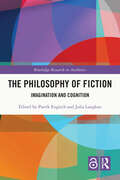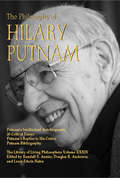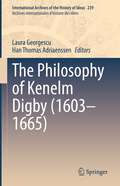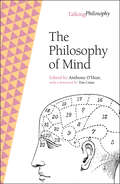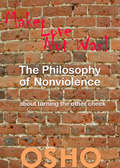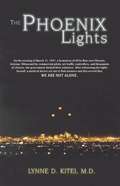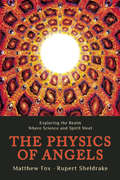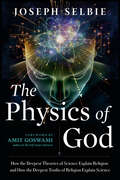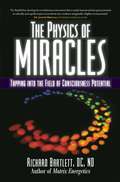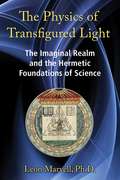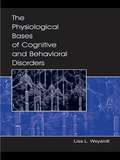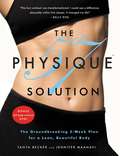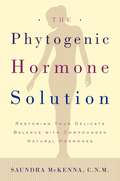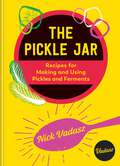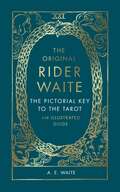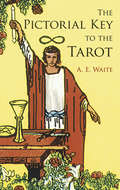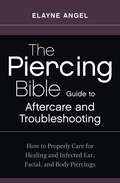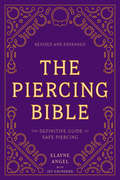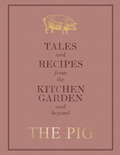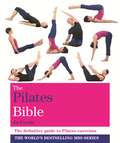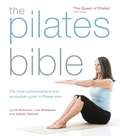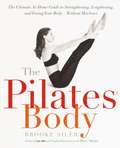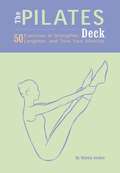- Table View
- List View
The Philosophy of Fiction: Imagination and Cognition (Routledge Research in Aesthetics)
by Patrik Engisch Julia LangkauThis book presents new research on the crucial role that imagination plays in contemporary philosophy of fiction. The first part of the book challenges the main paradigm set by Kendall Walton and Gregory Currie, according to which there is a necessary connection between fiction and a prescription that we engage imaginatively with its content. The contributors address the fundamental questions of how we can define fiction, and especially whether we can define fiction in terms of imagination. The second part focuses on a distinct but related question: can we point to some distinctive experiential features of our engagement with fiction? In the third part, the focus lies on the cognitive value of fiction and on the role that imagination plays in that respect. The chapters in this part discuss the cognitive value of fiction with respect to issues such as the training of the faculty of imagination, phenomenal experience, empathy, and the emotions. The Philosophy of Fiction will be of interest to scholars and advanced students working in aesthetics, philosophy of mind, epistemology, and literary studies. Chapter 13 of this book is available for free in PDF format as Open Access from the individual product page at www.routledge.com. It has been made available under a Creative Commons Attribution-Non Commercial-No Derivatives 4.0 license.
The Philosophy of Hilary Putnam
by Randall E. Auxier Douglas R. Anderson Lewis Edwin HahnHilary Putnam, who turned 88 in 2014, is one of the world's greatest living philosophers. He currently holds the position of Cogan University Professor Emeritus of Harvard. He has been called "one of the 20th century's true philosophic giants" (by Malcolm Thorndike Nicholson in Prospect magazine in 2013). He has been very influential in several different areas of philosophy: philosophy of mathematics, philosophy of language, philosophy of mind, and philosophy of science. This volume in the prestigious Library of Living Philosophers series contains 26 chapters original to this work, each written by a well-known philosopher, including the late Richard Rorty and the late Michael Dummett. The volume also includes Putnam's reply to each of the 26 critical and descriptive essays, which cover the broad range of Putnam's thought. They are organized thematically into the following parts: Philosophy and Mathematics, Logic and Language, Knowing and Being, Philosophy of Practice, and Elements of Pragmatism. Readers will also appreciate the extensive Intellectual Autobiography.
The Philosophy of Kenelm Digby (International Archives of the History of Ideas Archives internationales d'histoire des idées #239)
by Han Thomas Adriaenssen Laura GeorgescuThis book examines the philosophical and scientific achievements of Sir Kenelm Digby, a successful English diplomat, privateer and natural philosopher of the mid-1600s. Not widely remembered today, Digby is one of the most intriguing figures in the history of early modern philosophers. Among scholars, he is known for his attempt to reconcile what perhaps seem to be irreconcilable philosophical frameworks: Aristotelianism and early modern mechanism.This contributed volume offers the first full-length treatment of Digby’s work and of the unique position he occupied in early modern intellectual history. It explores key aspects of Digby’s metaphysics, epistemology, and philosophical method, and offers a new appraisal of his contributions to early modern natural philosophy and mathematics.A dozen contributors offer their expert insight into such topics asBody, quantity, and measures in Digby's natural philosophyEcumenism and common notions in DigbyAristotelianism and accidents in Digby's philosophyDigby on body and soulDigby on method and experimentsThis book volume will be of benefit to a broad audience of scholars, educators, and students of the history of early modern science and philosophy.
The Philosophy of Mind (Talking Philosophy)
by Tim Crane Anthony O’HearA deep concern with consciousness and intentionality is one of the several things that has lately moved into the centre of the philosophy of mind. The issue of consciousness is often treated as something distinct from intentionality, but – as Tim Crane notes in his incisive new Foreword – there is now something of a sea-change. This classic volume may be at least partly responsible for the shift in how philosophy of mind is starting to be understood. Before its first appearance, discussions of consciousness and intentionality in the context of perception were in their infancy. The book was a departure from the way this part of philosophy was conceived. It pointed to new ways to look at the discipline, addressing both the epistemology of mind, and intentionality and consciousness, especially in connection with perception. Showcasing many leading figures in the field, it offers a splendid overview of the issues at stake.
The Philosophy of Nonviolence
by Osho Osho International FoundationWhile nonviolence is a philosophy to Mahatma Gandhi; it is not a philosophy to Osho, but an experience. Osho talks about his understanding of reverence for life, he does not use the word non-violence.
The Phoenix Lights
by Lynne D. KiteiThe Phoenix Lights: On the Evening of March 13, 1997, a Formation of Ufos Flew over Phoenix, Arizona. They Were Witnessed by Commercial Pilots, Air Traffic Controllers. During the evening hours of March 13, 1997, thousands of Arizona residents witnessed a mile-long, v-shaped formation of lights flying in the skies overhead. The UFO sightings garnered headline news, catching the attention of both USA Today and the CBS Evening News with Dan Rather. One person, however, was not surprised by the appearance of the lights. Dr. Lynne Kitei was simply grateful that a phenomenon she'd been witnessing--and documenting--for months was being validated by the experience of thousands of people statewide. After the incident, Dr. Kitei preferred to stay in the background, anonymously feeding information and video clips to the many news organizations who wanted in on the story. Now, for the first time, Dr. Kitei comes forward to tell her own story. "The Phoenix Lights" is an exhaustively researched look at the phenomenon, including dozens of astonishing photographs and Kitei's own take on the wider implications of this remarkable event.
The Physics of Angels
by Matthew Fox Rupert Sheldrake"Matthew Fox might well be the most creative, the most comprehensive, surely the most challenging religious-spiritual teacher in America."--Thomas Berry"Rupert Sheldrake continues to chart a new course in our understanding of the non-local mind that connects all of us."--Deepak ChopraMany people believe in angels, but few can define these enigmatic spirits. Now visionary theologian Matthew Fox and acclaimed biologist Rupert Sheldrake--pioneers in modern religious thinking and scientific theory--launch a groundbreaking exploration into the ancient concept of the angel and restore dignity, meaning, and joy to our time-honored belief in these heavenly beings.
The Physics of God: How the Deepest Theories of Science Explain Religion and How the Deepest Truths of Religion Explain Science
by Joseph Selbie“An impressive and thought-provoking work . . . regarding the metaphysical mysteries of life, physical reality, and human consciousness. Highly recommended!” —Spirituality TodayScience and religion are often thought to be in conflict. But the contemporary fields of relativity, quantum physics, neuroscience, and more are in agreement with the transcendent phenomena described by saints, sages, and near-death experiencers. Today’s science actually provides profound insight into miracles, immortality, heaven, God, and transcendent awareness.The Physics of God describes the intersections of science and religion with colorful, easy-to-understand metaphors, making abstruse subjects within both science and religion easily accessible to the layman. This intriguing book:Pulls back the curtain on the light-show illusion we call matter.Connects string theory to religion’s transcendent heavens.Reveals the scientific secret of life and immortality.Demonstrates the miracle-making power of our minds to effect instantaneous physiological changes.Included in this revised edition is a new chapter on the physics of meditation and other updates.
The Physics of Miracles: Tapping in to the Field of Consciousness Potential
by Richard BartlettWhen Richard Bartlett first experienced the origins of his Matrix Energetics program, his goal was only to help the patients who brought their myriad health problems to his Chiropractic practice. Now, nearly ten years after the event that would redirect the entire course of his life, Dr. Bartlett brings the power of his seminars into the book, The Physics of Miracles. By lightly touching his clients while at the same time applying focused intent, he could restore them to a physically, mentally, and spiritually balanced state, instantly shifting misalignments that had plagued them for years. Most astonishing of all, he could teach anyone how to do this. Now, for millions of people looking for empowerment in an age of declining and impersonal healthcare, Dr. Bartlett shares this phenomenon in a book full of explosive potential. In The Physics of Miracles, Dr. Bartlett builds upon his popular seminars to teach us how to access the discovery he has made--a process that merges the science of subtle energy with our innate imaginations to produce measurable results. By applying forces known to modern physics, each of us can tap into states of healthy awareness from different moments--in essence, travel in time--and bring them into the present for immediate, profound results. As Dr. Bartlett clearly shows, this practice requires no special training, produces transformation in the blink of an eye, and is available to everyone who has a willingness to learn. The Physics of Miracles provides an easily-reproducible, results-oriented process of change that draws on the fundamental principles embraced by the field of quantum and scalar physics. This paradigm-busting book can teach anyone how to access their creative power to heal and transform their lives.
The Physics of Transfigured Light: The Imaginal Realm and the Hermetic Foundations of Science
by Arthur Versluis Leon MarvellReveals the Hermetic underpinnings of modern scientific theories • Offers a full reconsideration of the history of science from Newton to the present day as well as a Platonic-Hermetic perspective on modern technology • Examines Hermetic resonances among the ideas of Gurdjieff, Robert Fludd, Marsilio Ficino, and cybernetics; Einstein and the Tibetan Bardo; Neoplatonism and artificial intelligence; and Rosicrucianism and the internet • Shows how Hermetic doctrine is at the heart of what modern physics is now rediscovering: that consciousness permeates everything Contemporary scientific disciplines such as chaos and complexity theory, artificial intelligence, and cognitive science treat themselves as new fields of inquiry, but many of these ideas can be traced back to Hermeticism, the European intellectual tradition sparked by the rediscovery of the Corpus Hermeticum and Platonic texts in the 15th century. Building a map of the progression of scientific thought across centuries and continents, Leon Marvell examines the ancient roots of Hermeticism, its rise during the Renaissance, and its suppression during the scientific revolution of the Enlightenment. He reveals how three main Hermetic ideas--the divine spark within each individual, the subtle body, and the anima mundi or world soul--have continually emerged at the cutting edge of science and philosophy throughout the ages because these ideas represent universal truths recognized by each era of human civilization. Marvell examines Hermetic resonances among the ideas of Gurdjieff, Robert Fludd, Marsilio Ficino, and cybernetic theory; Einstein and the Tibetan Bardo; and Neoplatonism and the work of AI scientist Christopher Langton. He reveals how the Rosicrucian description of the Invisible College also describes the instant availability of knowledge via the Internet, and he shows how Hermetic thought is at the heart of what modern physics is rediscovering: that consciousness permeates everything and the universe cannot be reduced to the random play of matter. Offering a full reconsideration of the history of science from Newton to the present day as well as a Platonic-Hermetic perspective on modern technology, Marvell reveals the pattern that connects the sciences, philosophy, and ancient knowledge and opens a potentially rich field of inquiry for 21st-century science.
The Physiological Bases of Cognitive and Behavioral Disorders
by Lisa WeyandtUp to twenty percent of the American population suffers from a diagnosable mental disorder, and cross-national studies suggest a high prevalence of such disorders elsewhere. In recent decades, advances in our knowledge of the brain are causing us to question many of the theories underlying traditional approaches to diagnosing and treating these disorders. Researchers in diverse fields--molecular genetics, behavioral, cognitive and clinical neuroscience, neuroimaging, neurophysiology, and neurology--have contributed to the advances.The new knowledge that has been amassed should inform work with clients, but for most practitioners and practitioners-in-training, who lack specialized background, it has been difficult to grasp.In this book, specifically designed to meet the needs of graduate students in clinical, counseling, and school psychology programs, Lisa Weyandt offers a comprehensive, up-to-date, readable overview of our current understanding of the biological bases of psychopathology and its implications for intervention. Early chapters concisely and clearly explain the basics of brain structure and function and current research techniques; they set the stage for chapters examining each major group of disorders. An extensive art program underlines the important points.
The Physique 57(R) Solution: The Groundbreaking 2-Week Plan for a Lean, Beautiful Body
by Tanya Becker Jennifer MaanaviWhat if you could achieve your best body starting now? THE PHYSIQUE 57 SOLUTION, celebrity praised and widely loved, is designed to systematically sculpt your muscles to create a lean, beautiful shape. This unique, effective workout combines interval training, isometric exercises, and orthopedic stretches to rapidly and dramatically transform your body. No matter your level of fitness, the Physique 57 technique will keep you challenged, motivated, and entertained.Now combined with a healthy and delicious meal plan, this two-week program will help you get your best body fast. Discover:· Step-by-step, groundbreaking workouts offering major calorie burn· Innovative choreography, including muscle-defining arm exercises, intense seat-and-thigh sequences, and waist-chiseling ab moves· A super-slimming two-week meal plan· A variety of flavorful and healthy recipes for breakfast, lunch, dinner, snacks, and dessert· Motivating tips to help you reach your goals!Drop pounds, lose up to 10 inches, and transform into the best version of yourself.
The Phytogenic Hormone Solution: Restoring Your Delicate Balance with Compounded Natural Hormones
by Saundra MckennaThe Phytogenic Hormone Solution is a must-read for women suffering from hormone-related PMS, infertility, irregular cycles, fatigue, weight gain, and symptoms of perimenopause and menopause such as insomnia, headaches, and hot flashes. While conventional hormone replacement therapy can mitigate some of these problems, it is associated with several serious health risks.
The Pickle Jar: Recipes for Making and Using Pickles and Ferments from the Award-Winning Brand Vadasz
by Nick VadaszFantastic flavour. Great for gut health. Pickles and ferments are the easy and delicious way to upgrade any meal!Discover 70 delicious recipes from the award-winning pickles and ferments brand, Vadasz. In The Pickle Jar, fermenting expert and founder Nick Vadasz shares his advice on how to make and use ferments and pickles with creative recipes that are easy to achieve.PART ONE: Learn how to make your own fermented foods, from classics like Kimchi and Sauerkraut to flavour-packed creations such as Pickled Fennel with Lemon and Fermented Honey with Garlic & Chilli. PART TWO: Recipes to incorporate pickles and ferments into your everyday cooking. From Cheese and Pickle Quesadillas and Apricot and Curry Kraut Salad, to Kimchi Prawn Toast or even a Pickle Martini.Whether you want to learn to create ferments from scratch or find ways to save the kimchi languishing in your fridge, The Pickle Jar offers endless ways to unlock the power of pickles for a flavour and gut health superboost!Vadasz was first founded in 2011 and has been crafting delicious, healthy and award-winning pickles & ferments ever since. Vadasz was the first UK based producer of cold brined pickles and chilled live ferments and is now stocked in all major supermarkets and a variety of restaurants nationwide. Vadasz has been awarded several accolades, including:- Grocer Food Brand of the Year 2024- Grocer New Product of the Year 2024 - Champion Condiment- Grocer Top Launches of the Year 2024 Condiments- Great Taste Award Winners 2024 - Great British Food Awards 2024 Gold Medal
The Pickle Jar: Recipes for Making and Using Pickles and Ferments from the Award-Winning Brand Vadasz
by Nick VadaszFantastic flavour. Great for gut health. Pickles and ferments are the easy and delicious way to upgrade any meal!Discover 70 delicious recipes from the award-winning pickles and ferments brand, Vadasz. In The Pickle Jar, fermenting expert and founder Nick Vadasz shares his advice on how to make and use ferments and pickles with creative recipes that are easy to achieve.PART ONE: Learn how to make your own fermented foods, from classics like Kimchi and Sauerkraut to flavour-packed creations such as Pickled Fennel with Lemon and Fermented Honey with Garlic & Chilli. PART TWO: Recipes to incorporate pickles and ferments into your everyday cooking. From Cheese and Pickle Quesadillas and Apricot and Curry Kraut Salad, to Kimchi Prawn Toast or even a Pickle Martini.Whether you want to learn to create ferments from scratch or find ways to save the kimchi languishing in your fridge, The Pickle Jar offers endless ways to unlock the power of pickles for a flavour and gut health superboost!Vadasz was first founded in 2011 and has been crafting delicious, healthy and award-winning pickles & ferments ever since. Vadasz was the first UK based producer of cold brined pickles and chilled live ferments and is now stocked in all major supermarkets and a variety of restaurants nationwide. Vadasz has been awarded several accolades, including:- Grocer Food Brand of the Year 2024- Grocer New Product of the Year 2024 - Champion Condiment- Grocer Top Launches of the Year 2024 Condiments- Great Taste Award Winners 2024 - Great British Food Awards 2024 Gold Medal
The Pictorial Key To The Tarot: A Visual Companion to the Rider Waite Tarot
by A.E. WaitePicture your fate, forecast your future and transform your fortune An illustrated guide to the world famous Original Rider Waite Tarot - the most popular deck in the world.Unlock the secrets of the tarot with renowned scholar of the occult, A E Waite. Featuring the original card artwork by Pamela Colman Smith, The Pictorial Key to the Tarot is an insightful card-by-card analysis of the 78-card Rider Waite Tarot deck featuring both regular and reverse meanings. This illuminating book is the ultimate guide to mastering the art of tarot.
The Pictorial Key to the Tarot (Dover Occult Ser.)
by A. E. WaiteLong used in telling fortunes and popular today among New Agers, Tarot cards are regarded by many as "the training wheels" on the bicycle of psychic development. Centuries of scientific progress have not diminished the irresistible attraction of gazing at picture cards to see the future and determine one's fate. This book by Arthur Edward Waite, the designer of the most widely known Tarot deck and distinguished scholar of the Kabbalah, is the essential Tarot reference. The pictorial key contains a detailed description of each card in the celebrated 78-card Rider-Waite Tarot deck, along with regular and reversed meanings. Contents describe symbols and secret tradition; the four suits of Tarot, including wands, cups, swords, and pentacles; the recurrence of cards in dealing; an ancient Celtic method of divination; as well as wonderful illustrations of Tarot cards.While the perfect complement to old-style fortune telling, The Pictorial Key to the Tarot also serves to make the Tarot entirely accessible to modern-day readers. It is also the classic guide to the Rider-Waite deck and to Tarot symbolism in general.
The Piercing Bible Guide to Aftercare and Troubleshooting: How to Properly Care for Healing and Infected Ear, Facial, and Body Piercings
by Elayne AngelIn this compilation of chapters on healing and troubleshooting from The Piercing Bible, piercing expert Elayne Angel distills her best advice on caring for new piercings, from cleaning and hygiene to avoiding trauma and infection. It includes healing tips for every type of piercing: · Earlobe · Cartilage · Nose · Eyebrow · Tongue · Navel · Nipple · Genital Elayne has performed more than 40,000 piercings over the course of her professional piercing career, so she's seen it all--including every type of infection. Her troubleshooting tips address the problems that can arise, such as: · Localized infections · Abscesses · Cellulitis · Hypergranulation · Piercing pimples · Discoloration · Scarring · Dry skin · Tarnish tattoos · Dermatitis · Embedded jewelry · Traumatic tears · Rejection and migration With this quick, updated reference, you'll know exactly how to clean and care for your new piercing, no matter what questions you may have.
The Piercing Bible, Revised and Expanded: The Definitive Guide to Safe Piercing
by Elayne AngelEverything you need to know about ear, face, and body piercings—from how to find a skilled professional piercer to best practices for safe healing and optimal results. &“As a piercer, nurse, and educator, I can say without a doubt that this is the most complete book ever written for all people in our industry.&”—David A. Vidra, founder and president of Health Educators, Inc.Piercing expert Elayne Angel has performed over 50,000 piercings since the 1980s and has pioneered many placements, including tongue piercing and the triangle, lorum, and other genital piercings. Her authoritative and groundbreaking guidebook has been the definitive resource on body piercing since its publication in 2009.Many people are unaware of the elevated risks of getting pierced at a mall kiosk, by an untrained tattoo artist, or by a novice piercer; a skilled professional is necessary for safety and optimal results, whether piercing the ear, nose, or elsewhere. This revised and expanded edition is the only comprehensive reference book available to help you navigate the entire piercing process. It contains new illustrations, diagrams, and photos, along with fully updated information, including: • The best piercings and placements for various body parts and body types• Terminology, techniques, and tools of the trade• Vital sterility, sanitation, and hygiene information• Jewelry designs, sizes, materials, and quality• Piercing aftercare and troubleshooting advice for successful healing• How to become a piercer, piercing throughout history and in modern culture, and the future of body piercingThe Piercing Bible, Revised and Expanded, includes essential medical and technical updates, as well as refreshed illustrations and jewelry photography, to reflect today's standards and best practices for safe, professional piercing.
The Pig: Tales and Recipes from the Kitchen Garden and Beyond
by Robin HutsonThe Pig is a collection of restaurants with rooms in Hampshire, Devon, Dorset and Somerset - and soon in Kent, West Sussex and Cornwall. Now, everyone can enjoy The Pig from the comfort of their own homes. Among the pages of The Pig you will find an idiosyncratic, seasonal approach to the good life, with delicious recipes, how-to guides, tips, tricks and stories.Inside the pages of The Pig you will find: Classic recipes from Nan's rice pudding to proper fish pie, porchetta, gammon with parsley sauce, devilish devilled kidneys on toast, a right old eton mess and even a pink blancmange bunny.The Pig's Guide to Pigs from identifying different breeds and selecting the best cuts of meat to making your own sausages, crackling and charcuterie. How to pickle, forage and identify edible flowers and suggestions on how to bring the weird and wonderful vegetables, fruits and salads from the garden into the kitchen. Noble wine, simple food from classic cocktails to modern twists and all the best accompaniments. Interior design recreating the comfort and elegance of The Pig at home.Setting the scene, The Pigs top tips on hosting your own festivals, summer feasts and winter gatherings, including creating the perfect playlist to the best recipes to cook outdoors. Praise for The Pigs: Rick Stein: 'Dinner, bed and breakfast at The Pig, any Pig, is a comforting thought of some lovely flavoured pork, a British abundance of vegetables and some fabulous red wine.' The Sunday Times: 'There isn't a trace of cynicism here - just enthusiasm, craft and people who love what they do, creating a place you really, really don't want to leave.' The Financial Times 'Some inherited memory of a weekend with grandparents I never had... a little bohemian, and unbelievably good at cooking.' Tom Parker Bowles 'The Pig revolutionised the country house hotel, creating a true home away from home. No pomp or pretence, just beautiful rooms and magnificent food with produce from their own kitchen gardens. Where The Pig goes, the others follow.'
The Pilates Bible: Godsfield Bibles
by The Pilates Bibl Jo FerrisA complete illustrated guide to Pilates for beginners to advanced level.
The Pilates Bible: The most comprehensive and accessible guide to Pilates ever
by Lynne Robinson Lisa BradshawThe Pilates Bible is the most authoritative and comprehensive book on Pilates matwork ever written and demonstrates why this hugely popular exercise has gone from cult status to an essential part of our modern lifestyle. Drawing on the latest medical research, the authors have updated old favourites as well as introduced many new. All can be performed with little or no equipment and The Pilates Bible allows you to progress safely at your own pace through Beginners, Intermediate and Advanced. There are also special sections on Pilates for new mothers and children, people with problems such as osteoarthritis, back pain and knee injuries, as well as Pilates at the gym and the workplace, and for the performing arts and sport. This is truly the one-stop guide for Pilates novices as well as those hoping to consolidate what they already know.
The Pilates Bible: The most comprehensive and accessible guide to Pilates ever
by Lynne Robinson Lisa BradshawThe Pilates Bible is the most authoritative and comprehensive book on Pilates matwork ever written and demonstrates why this hugely popular exercise has gone from cult status to an essential part of our modern lifestyle. Drawing on the latest medical research, the authors have updated old favourites as well as introduced many new. All can be performed with little or no equipment and The Pilates Bible allows you to progress safely at your own pace through Beginners, Intermediate and Advanced. There are also special sections on Pilates for new mothers and children, people with problems such as osteoarthritis, back pain and knee injuries, as well as Pilates at the gym and the workplace, and for the performing arts and sport. This is truly the one-stop guide for Pilates novices as well as those hoping to consolidate what they already know.
The Pilates Body: The Ultimate At-Home Guide to Strengthening, Lengthening, and Toning Your Body--Without Machines
by Brooke SilerThe Pilates® method may be today's hottest exercise, but it has been endorsed by physicians for almost a century. Originally developed by Joseph H. Pilates to help strengthen and condition muscles, Pilates is the ultimate mind-body exercise for anyone who wants to tone, streamline, and realign their body without the bulked-up results of more conventional workout methods. Now, in The Pilates® Body, author Brooke Siler--one of the most sought-after personal trainers in the country and owner of New York's top studio for Pilates training, re: AB--provides a complete, easy-to follow program of Pilates exercises that can be done anywhere, anytime, and without machines. With step-by-step instructions, Siler guides the reader through the complete circuit of mat exercises, each of which is clearly illustrated by photographs, line drawings, and unique visualization exercises. With Pilates you will not only streamline your figure--you will dramatically improve your posture, flexibility, and balance, and enhance your physical and emotional well-being. The Pilates Body shows you how.
The Pilates Deck
by Nicole Kaufman Shirley SugimuraDevelop a strong and flexible body that moves with ease and grace. With these 50 pilates exercise cards, you'll enjoy invigorating exercise that targets areas which support good posture and long muscles. Without relying on machines, The Pilates Deck makes working out easy by incorporating mat exercises that progress from preparatory movements to advanced sequences.
